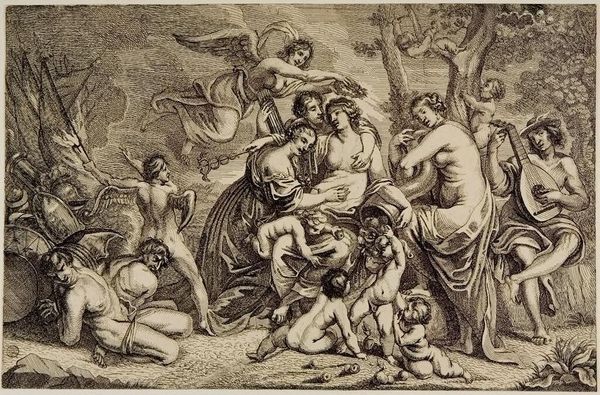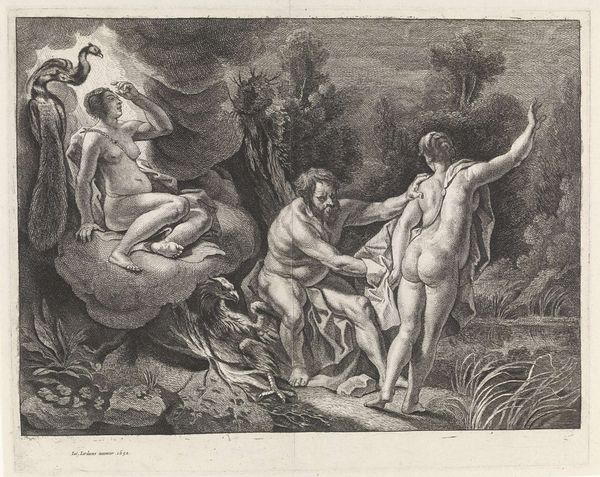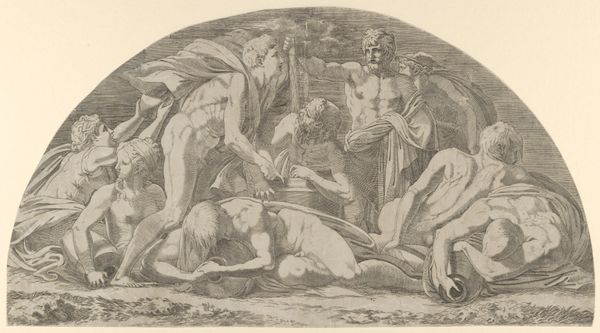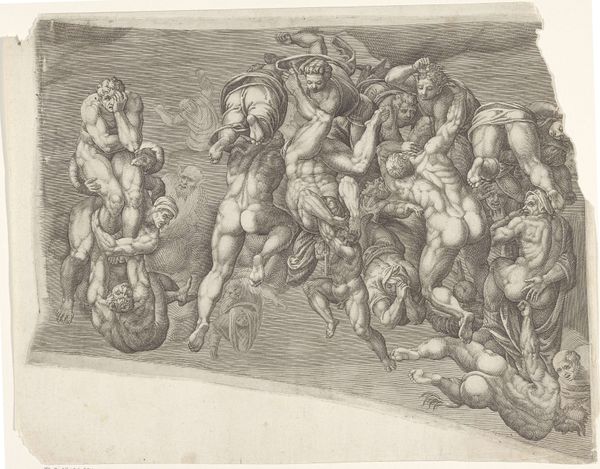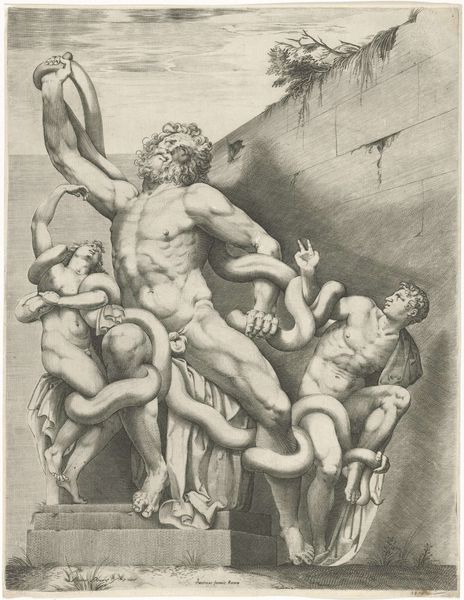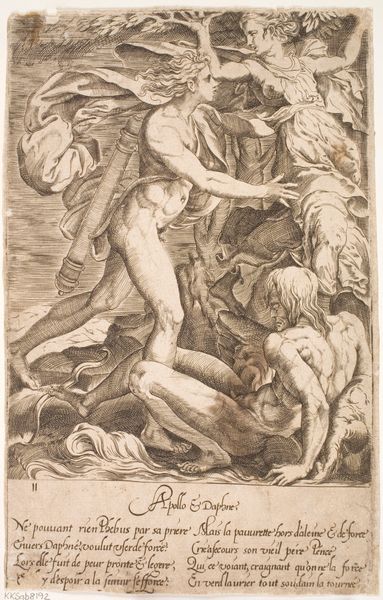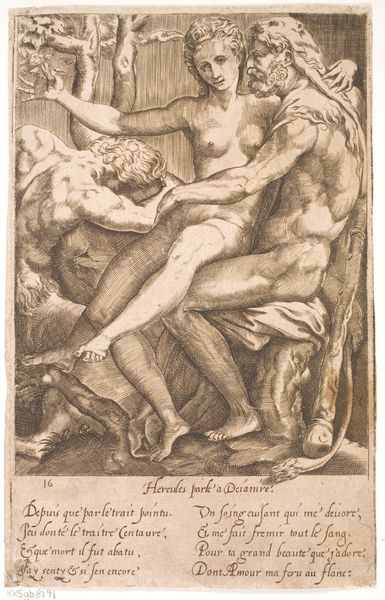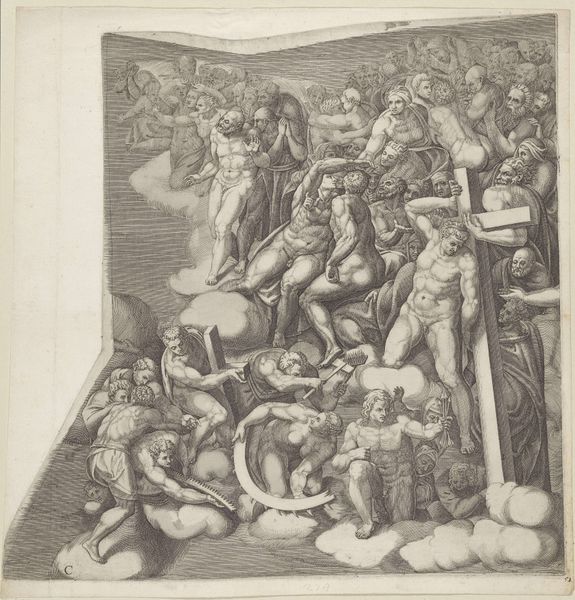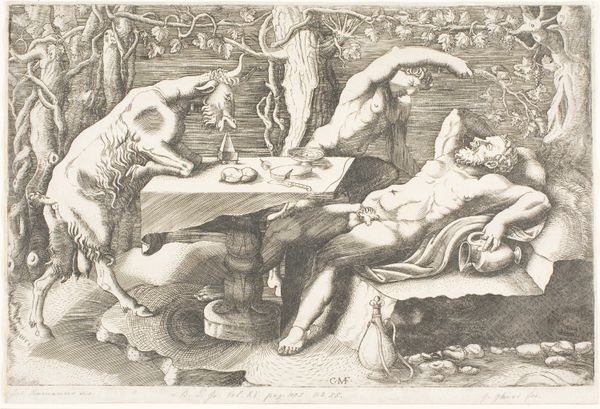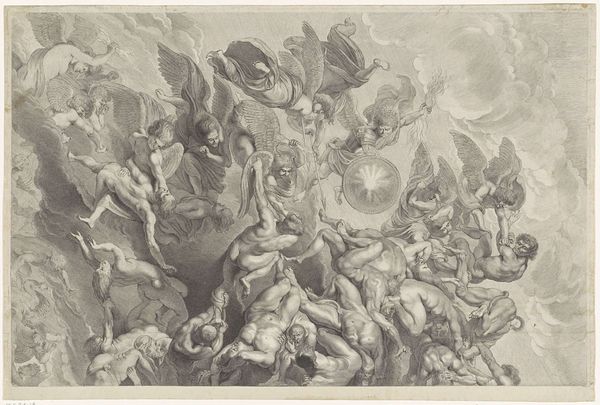
engraving
#
baroque
#
charcoal drawing
#
figuration
#
surrealism
#
history-painting
#
engraving
Dimensions: height 292 mm, width 472 mm
Copyright: Rijks Museum: Open Domain
Editor: This engraving, "Laatste Oordeel (onderste plaat)", or "Last Judgement" by Cornelis Visscher, dating back to between 1638 and 1658, is a powerfully disturbing image. The swirling mass of bodies evokes chaos and suffering. What strikes you about its formal qualities? Curator: Immediately, the lack of clear spatial organization commands attention. Observe how the figures are densely packed, overlapping without a discernible background or horizon line. The artist abandoned classical notions of balanced composition. Visscher seems more interested in capturing an emotional state. What impact does this have on the viewer? Editor: It definitely amplifies the feeling of being overwhelmed. The lack of a clear focal point forces your eye to dart around, mimicking the confusion and panic suggested by the subject matter. What does the monochrome do to support that idea? Curator: Precisely. Limiting the colour palette encourages you to examine light and shadow playing across the forms, lending them plasticity. Light here doesn't describe but animates. Visscher models the bodies with intense areas of darkness, giving form to tormented physicality. Also consider the surface - the varying texture due to the engraved lines create a kinetic feeling. Would you agree? Editor: Yes, definitely. I find the overall effect both compelling and unsettling. It feels incredibly dynamic, in both form and concept. Curator: The image serves as an interesting case for Baroque engraving because Visscher manipulates line and tone to bypass the boundaries of the medium, communicating emotive and sublime states through pure formal innovation. Editor: I hadn't thought of it that way. I learned a great deal about considering texture in Baroque engraving and also about considering an artist's perspective in ignoring balance for chaos and emotions. Thanks for opening my eyes.
Comments
No comments
Be the first to comment and join the conversation on the ultimate creative platform.
